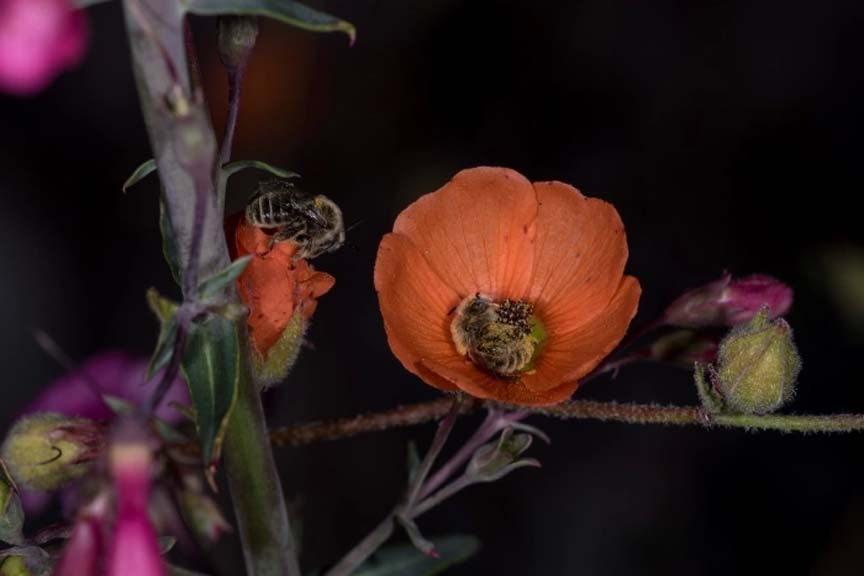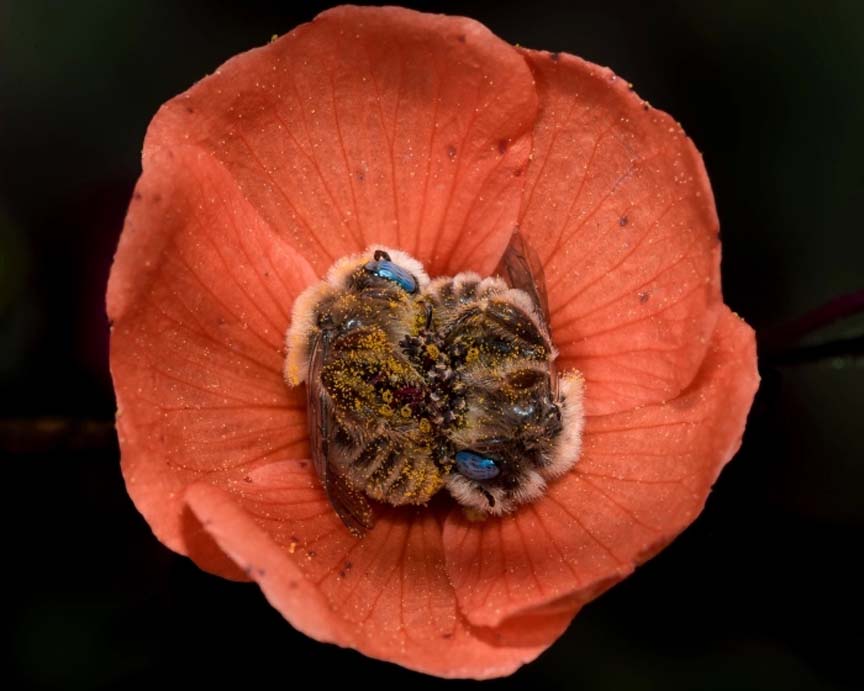
|
|
|
What's IotD? The interesting, amazing, or mind-boggling images of our days. |
|
IotD Stuff |
|
Permalink Latest Image |
|
|
|
Some folks who have noticed IotD
Neatorama |
|
Common image haunts
Astro Pic of the Day |
|
Advertising |
April 17th, 2019: The Sting

I followed her to the cheatin’ side of town and watched her stop at a sleazy patch of Globe Mallows.
She didn’t check in at the office but right to a blossom and went in. Must have an arrangement with the management for a reserved
blossom and her own key. After she went in I found a young bud where I could hang out on and watch with my Nikon, pocket flask,
and a pack of unfiltered Camels in hand.

I only had to wait a couple of Camels before a young stud bee shows up and slips into her blossom without knocking.
Soon they were swapping nectar and I had the photograph to collect my fee from the client.
But they were getting kinky so I watched for the rest of the pack.

I seem to have misplaced that photograph, so when the stud bee left I approached the lady and made arrangements for further
investigation... in exchange for it staying misplaced.
Say, once a week for the immediate future.
|
It is estimated that one third of the food that we consume each day relies on pollination mainly by bees. But as much as we are used to seeing them buzzing with work, they need their beauty sleep as well. Recently, wildlife photographer Joe Neely captured two bees snuggling in a flower, and the shot shows a beautiful side of them we rarely witness. “I came over and study it for a while and more bees showed up. Soon, all the vacant flowers were occupied and this one bee was left out. She crawled over to this open flower and got inside with the other one. I was watching as she stumbled around almost drunk-like and then got settled in.” “Well, I never knew that bees slept in flowers but as it turns out these bees (Diadasia diminuta) sleep in the orange flowers called Globe Mallows.” The Diadasia diminuta – or simply the globe mallow bee – collects pollen from its favorite food plant, globe mallow (Sphaeralcea). According to Forest Service at the United States Department of Agriculture, their nests are commonly found in partially compacted soil along the margins of dirt roads in the western United States. When it comes to bees sleeping, there are a few interesting details. “They don’t have eyelids, so you can’t just look for bees with their eyes closed,” Brandon Hopkins, a bee researcher at Washington State University, said. “By carefully watching bees, scientists have found that honey bees stop moving their antenna and in some cases fall over sideways.” The nuances of exactly how and where a bee sleeps depend on where it lives. After all, there are more than 20,000 known species of bees living on our planet. Honey bees, for example, work day and night and take shifts sleeping inside the hive. Their sleep patterns change as they grow up. Younger bees sleep less but older bees catch between 30 minutes and an hour and a half each night, taking little naps of about 15 to 30 seconds at a time. |
link
Gravdigr Wednesday Apr 17 10:05 AM
I feel a little dirty after reading Bruce's part of that...
|
Your reply here?
The Cellar Image of the Day is just a section of a larger web community: a bunch of interesting folks talking about everything. Add your two cents to IotD by joining the Cellar. |